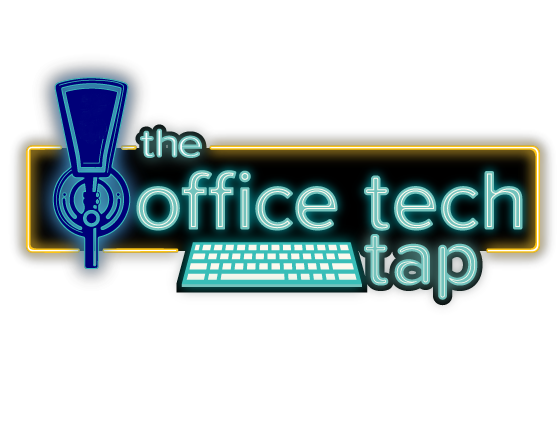Deep Dive – The Future of Managed Print Services: A Tale of Digital Transformation and Adaptation

In the lunch rooms of modern offices, amid the chatter about digital transformation and sustainability, one might think that the humble printer has been relegated to the annals of history. Yet, contrary to popular belief, the world of Managed Print Services (MPS) is not only alive but thriving, undergoing a metamorphosis that could redefine its role in the business ecosystem.
The Disconnect Between IT and Office Workers
“Most IT decision-makers still envisage a print-reliant workplace to 2025,” says a recent Global Print 2025 report, highlighting a disconnect between IT honchos and the rank-and-file who are pushing for a more digital, less paper-dependent work environment. This disconnect isn’t just a trivial matter; it’s a sign of the times. While the younger workforce is clamoring for digital solutions, the decision-makers are still rooted in traditional methods. The question then arises: How can this gap be bridged? (Global Print 2025, 2025, Source)
The MyQ Revolution
Enter MyQ, a company that has been quietly revolutionizing the MPS landscape. “We aim to transition businesses from traditional workplaces to more modern, efficient, and secure environments,” says the company. MyQ’s Digital Workplace Assistant is not just another cloud-based product; it’s a paradigm shift. It allows for advanced scanning workflows, secure cloud-based document storage, and meets the demands of a hybrid workforce. MyQ is essentially redefining what MPS can offer, moving beyond mere printing to a holistic approach that includes document management and workflow optimization. (MyQ, 2023, Source)
Artificial Intelligence: The New Frontier
But MyQ isn’t the only player betting on the future of print. Artificial Intelligence is stepping into the fray, promising to make MPS more efficient and sustainable. “AI algorithms can predict when a printer is likely to fail or run out of ink, allowing for proactive maintenance and reducing downtime,” says an industry expert. Imagine a world where your printer notifies you before it runs out of ink or experiences a malfunction, allowing you to address the issue before it disrupts your workflow. That’s the power of AI in MPS. (The Death of the Copier, 2023, Source)
“Print vendors must become a strategic partner to IT decision makers and lines-of-business”
Quocirca
Market Trends and Projections
The numbers back up the optimism. “The global managed print market is anticipated to grow at an 8.52% CAGR between 2023 and 2028 to reach $63.35 billion,” states a report by Mordor Intelligence. This growth isn’t just a result of technological advancements; it’s also driven by the increased adoption of MPS in various sectors like banking, financial services, and insurance. These industries are recognizing the cost-saving potential and efficiency gains that MPS can offer, thereby contributing to its growth. (XaaS Journal, 2023, Source)
The Sustainability Imperative: A Real-World Example
Sustainability is not just a buzzword; it’s a business imperative. “83% of all respondents expect sustainability to be highly important to their business by 2025,” according to the Global Print 2025 report. Companies are increasingly looking for MPS providers that can offer eco-friendly solutions, from energy-efficient printers to recycling programs for ink cartridges.
A compelling example comes from Lexmark, a leader in the MPS industry. According to Kyle Farmer, vice president of Lexmark MPS sales and marketing, “MPS results in fewer devices, fewer pages, and recycled cartridges—all of which have an impact on sustainability. Plus, we’re able to transform business processes by scanning documents and routing them through the workflow—to avoid printing them in the first place.” Lexmark has found that companies can save up to 20% of their printed output by implementing such solutions, which has a significant impact on the environment. (Lexmark, 2023, Source)
This focus on sustainability is not just about saving the planet; it’s also about saving costs. A more sustainable approach to printing can significantly reduce expenditures on paper and ink, making it a win-win situation for both the environment and the bottom line.
The Bottom Line
So, what’s the bottom line? The MPS industry is far from printing its last page. Through technological advancements and a focus on service over hardware, MPS is poised for a future that is not just sustainable but also promising. The industry is adapting, evolving, and most importantly, growing, proving that in a digital world, print still has its place.
In the end, the story of MPS is not one of obsolescence but of transformation—a tale that is still being written, one printout at a time. With the right strategies and innovations, the MPS industry can not only survive but thrive in the digital age, offering solutions that meet the evolving needs of businesses worldwide.
The future of MPS is not set in stone; it’s being printed in real-time, shaped by the forces of technology, market demand, and a growing emphasis on sustainability. And as this story unfolds, one thing is clear: the last chapter is far from written.
– Greg Walters, Head Writer



